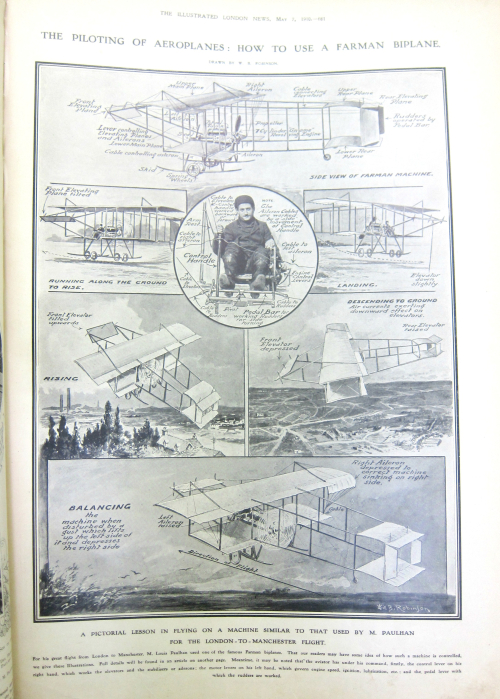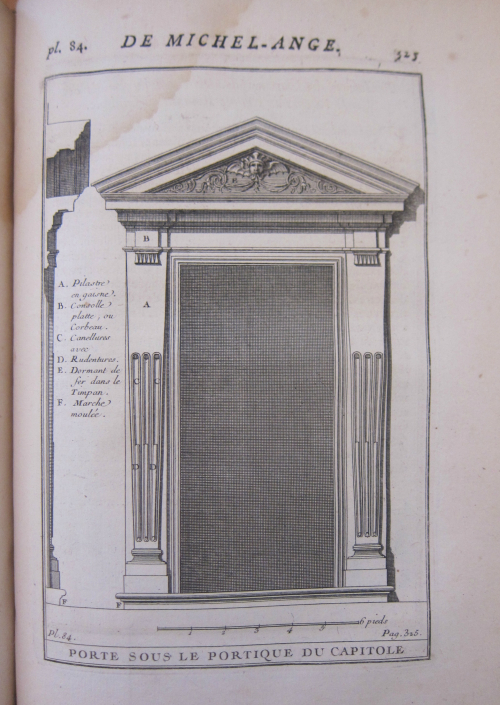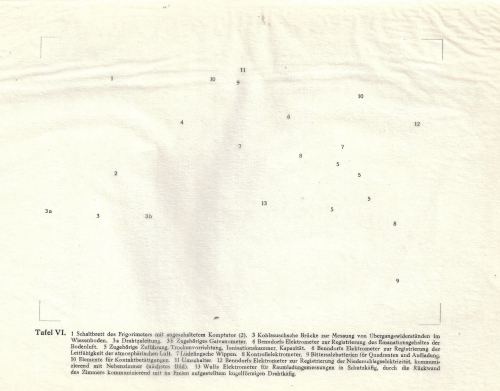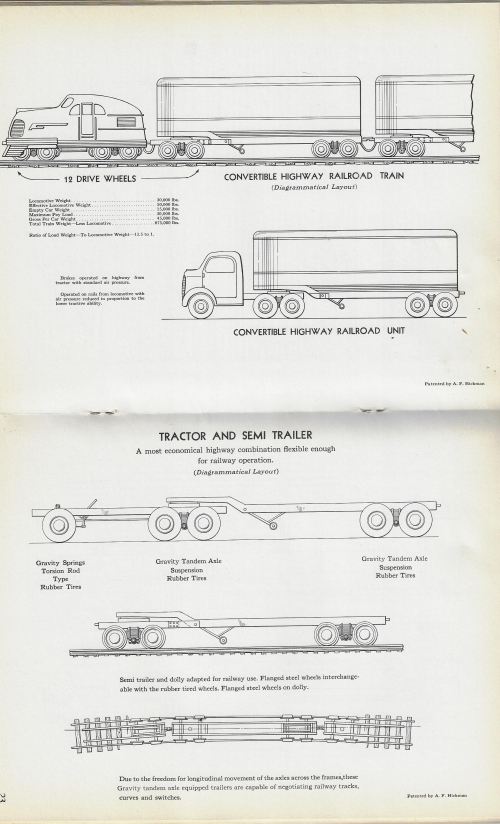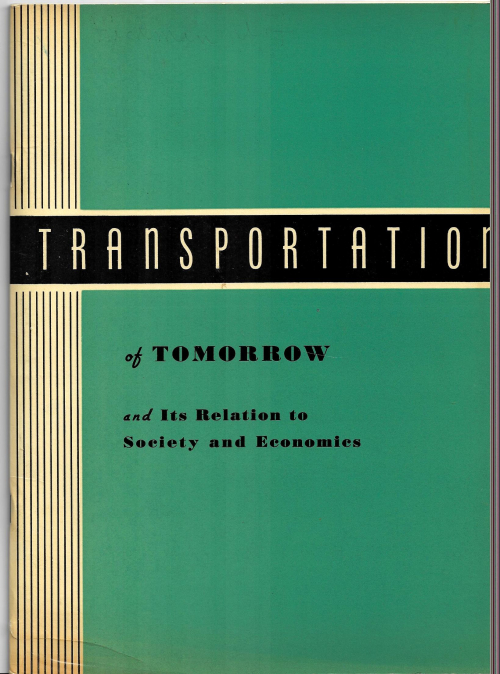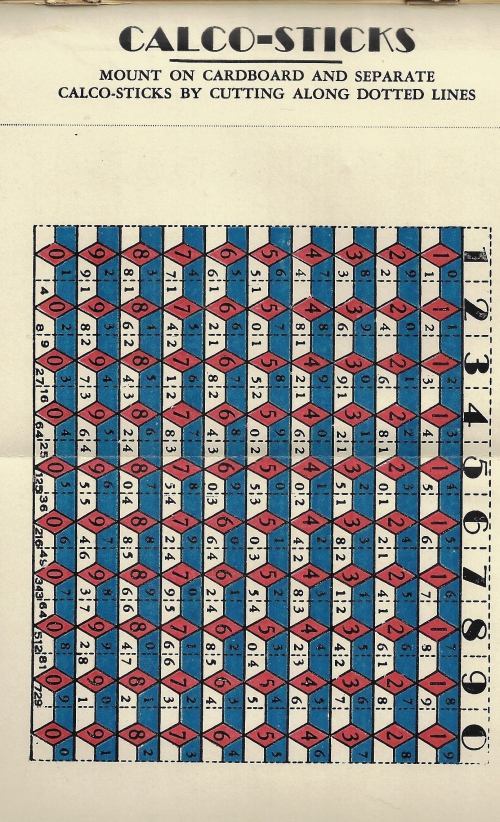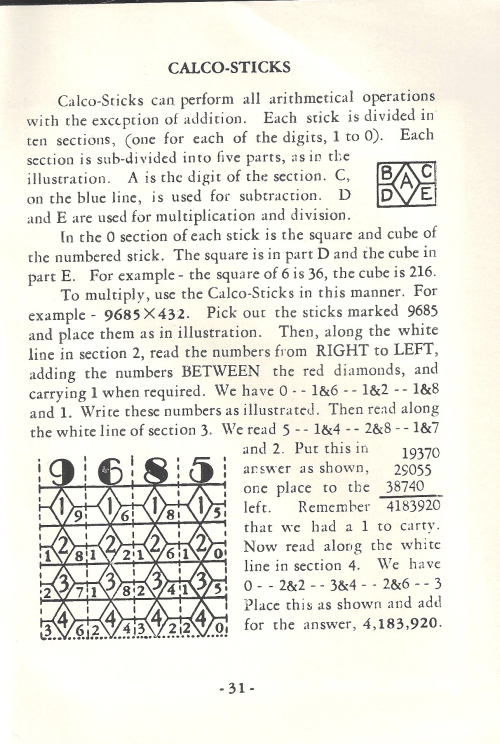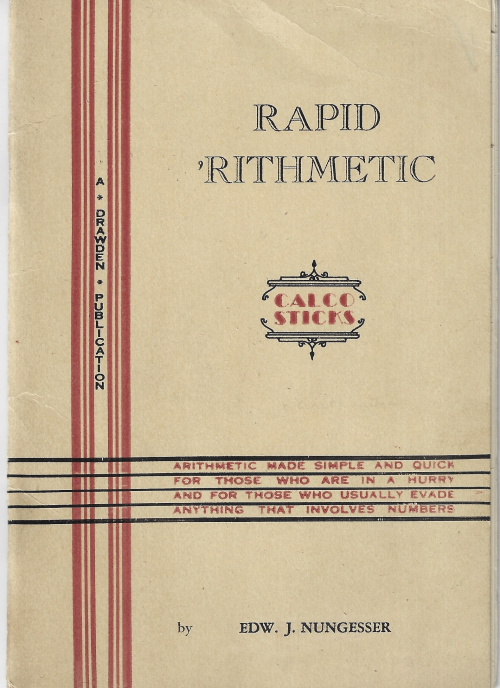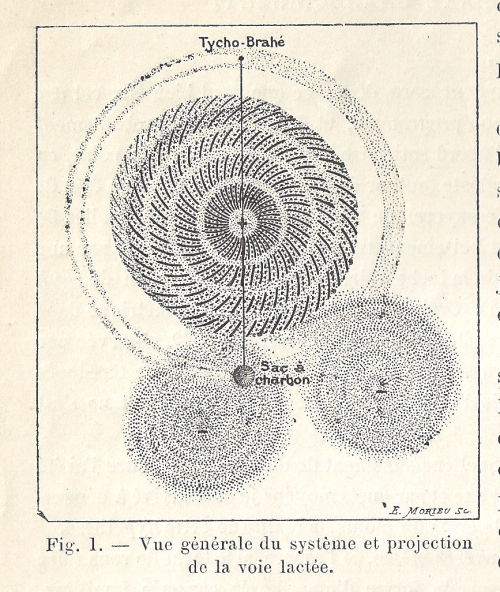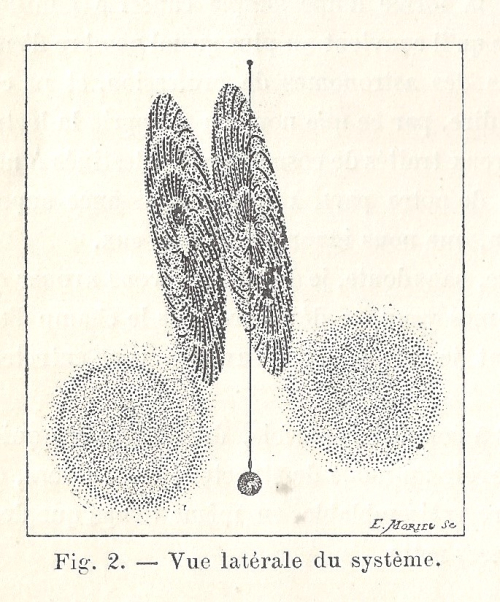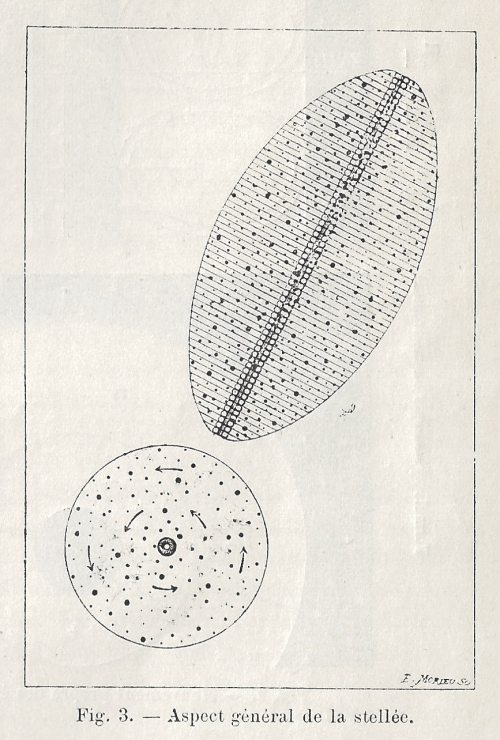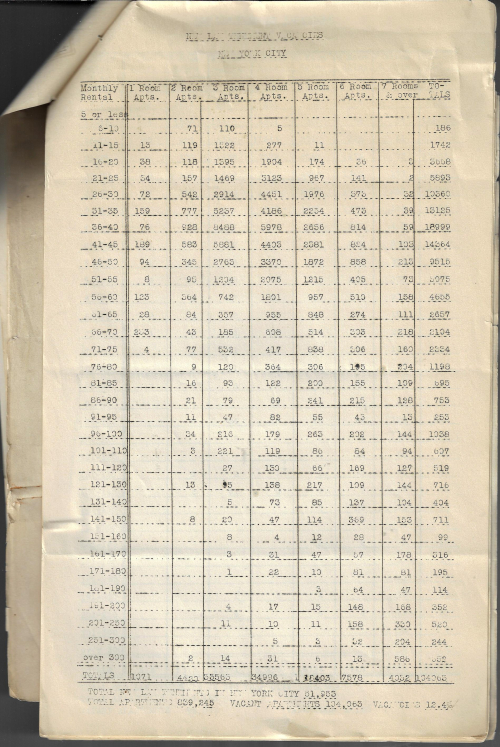JF Ptak Science Books
A Daily History of Holes, Dots, Lines, Science, History, Math, Physics, Art, the Unintentional Absurd, Architecture, Maps, Data Visualization, Blank and Missing Things, and so on. |1.6 million words, 7500 images, 4.9 million hits| Press & appearances in The Times, Le Figaro, Mensa, The Economist, The Guardian, Discovery News, Slate, Le Monde, Sci American Blogs, Le Point, and many other places... 5000+ total posts since 2008.. Contact johnfptak at gmail dot com
Google search
The Fine Print

The History of Ideas Blog by John Ptak is licensed under a Creative Commons Attribution-Noncommercial-No Derivative Works 3.0 United States License.
Based on a work at longstreet.typepad.com.
Permissions beyond the scope of this license may be available at http://www.thesciencebookstore.com.
Great Calculators: Mental and Metal and back to Mental
JF Ptak Science Books Expanding Post 2739
Two months ago I wrote on a paper that I found in a mid-century engineering journal (Minutes of Proceedings of the Institution of Civil Engineers with Abstracts of the Discussions) on the fantastic mental arithmetician George Parker. When I went to retrieve the volume to look for a different paper (on Fresnel lenses for lighthouses) I flipped the pages to then end of the book to read through the index, and my thumb stopped on a page with a running header, "Mechanical Notations". And lo and behold, the very familiar title was indeed a paper on a report to the Institution on Charles Babbage (1791-1871) and his "mechanical notation", given by his son Henry P. Babbage (1824-1918).
Well. Babbage over the years proposed several different difference and analytical engines which indeed could be considered the first stored program Turing-complete computers. Never quite being able to get to the end of one project, and no doubt discovering along his various ways even better and more substantial designs (as well as int he pursuit of future money to build not "version 1.0" or "1.1" but "3.0"), Babbage tried within the limits of available technology to produce his heroic beast. His "mechanical notation" appears in full force in his diagrams for the design of his analytical engine, and it is there that we see his self-derived shorthand and symbols that produced and still-produce evident budgets of unknowns. The thing is, with these mechanical notations, is that they were part of a user manual, and the user manual was actually left unwritten and chiefly unexplained. And that is a problem.
In any event this paper by Henry Provost Babbage makes some attempt in outlining the notation, though for me it is done without success. This is further complicated by almost none of the notation presented in illustration. There were other and earlier illustrated papers (including some by Babbage himself) that stretch back at least to 1821--but this explanation of the notations leaves me a little on the outside.
And so we moved from the mental calculator George Bidder to the great metallic calculating engines of Charles Babbage, who takes us back to the opening biological/mental part of engineering thought via his manual-less manual, where his instructions and explanations of the interactions of thousands of perfectly manufactured precision gear works is printed but the key to which is left locked in Babbage's head.
_____
Here's the part of the post that led to the discovery of the Babbage, both of these papers as I said appearing in the same journal volume:
George Parker Bidder (1806-1878) gave a lecture (without notes) explaining to the audience at the Institution of Civil Engineers in 18561 his interior practices and habits in performing absolutely prodigious and complex arithmetical feats entirely in his head. He was among the first tier of performing human calculators (like Zerah Colburn, b. 1804) mental calculations enchanted large audiences from the stages, answering seemingly impossible questions with accuracy and speed. It is in the 1856 paper (which Martin Gardner refers to as "historic2" and "valuable") that he relates some of the practices which clarify his process--for example, one large element was that he would keep one fact in his head at a time, until it was finished, and then move on. Of course for people who did not have anything even remotely resembling this impossible ability, the information is interesting, though I have no idea how useful it may be...unless you were already a savant, that is. Some things are just not to be known by mere mortals. Like the probably-apocryphal story of someone asking Hans Bethe how Richard Feynman had solved--on his feet--some impossible something, and Bethe responds: "First he thinks very very hard....and then he gets the answer".) Something like that.
In any event, here's the article, reproduced by Devonshire Perspectives website. My own copy is in a tightly-bound volume from the proceedings, and no doubt I would have broken the spine trying to copy the thing. That said, if anyone wants to buy this volume, it is for sale--this is a book selling site, sorta, after all.
The full lecture by Bidder:
https://www.devonperspectives.co.uk/georgebidder/OnMentalCalculation.pdf
Notes:
- Bidder, George Parker. "On Mental Calculation", in Minutes of Proceedings of he Institution of Civil Engineers with Abstracts of the Discussions, volume XV, Session 1855-6, London, published by the Institution, pp 251-280 in the 534pp volume.
2. Gardner, Martin. "Mathematical Games", in Scientific American, 216/4, April 1967, p. 117.
Also, I found an interesting biographical treatment of Bidder:
- Bidder, George Parker. Mental Arithmetic. A short account of George Bidder, the celebrated mental calculator: with a variety of the most difficult questions, proposed to him at the principal towns in the kingdom, and his surprising rapid answers, etc. by George Parker BIDDER Rapid Calculator and Engineer., 1821
It seems as though there was a separate edition of this 1856 lecture tens years later, published by Clowes:
- Bidder, George Parker, and Institution of Civil Engineers (Great Britain). On Mental Calculation. Edited by Charles Manby. London: Printed by W. Clowes, 1866.
And another printing somewhat later:
- Bidder, George Parker. On Mental Calculation. London: Printed by W. Clowes, 1886.
Posted by John F. Ptak in Calculating, Technology, History of | Permalink | Comments (0)
Straightening Out Michelangelo (Part of the "History of Lines" series)
JF Ptak Science Books Quick Post
I suspect that the subject of "straightening out" of any work of Michelangelo is, well, infrequently done, mainly because of all the things that could and should be written about that man this would be the least of them all. That said, the "straightening" bit struck me when I was looking at the detail in an engraving of a doorway that Michelangelo design on Capitoline Hill, and the extraordinary detail in the shadowing just called out to me. The design is beautiful, but all I could think of was how many squares were in that shadow. And then of course one had to wonder how long a line all of those shadow line would be if they were all placed end-to-end. The answer to that is about 300'.
There you have it.
The engraving is from C.A. d'Aviler, Cours d'Architecture qui Comprend les Ordres de Vignole...new edition, printed in Paris in 1756, p 325, plate 84, "Porte sous le portique du Capitole".
The detail of the shadow:
And the full image:
Continue reading "Straightening Out Michelangelo (Part of the "History of Lines" series)" »
Posted by John F. Ptak in Architecture and Building, History of Lines | Permalink | Comments (0)
"Should Britain Fight?" An argument for Appeasement, 1938
JF Ptak Science Books Post 2753
There were some in Great Britain who just simply did not want to become involved in the European crisis, and who saw their way around the obvious to the in-obvious of what needed to be seen. That, or the source of info leading to this opinion was limited. Or, the information sources were good but the interpretation was limited. Or it was too early in the process of war...except in this case, in the pamphlet below, it was already 1938, and the issue was Hitler and Czechoslovakia.
It is a little difficult to say when this was published in 1938--if it was published in the early Spring the Anschluss would not yet have occurred, and so no mention; but I have a feeling that this is post-Anschluss, and the event (of March 1938) is treated with silence, as it surely would not have fit very well with the writer's denouncing of the diatribes against Hitler. My suspicion is that this was post-Anschluss and pre-Munch Agreement/Diktat (30 September), and that the entire business with Austria is left out of whatever thinking is going on here. There is a mention of strengthening Chamberlain's hand though nothing specifically about the Munich meeting, so my general reaction is that this pamphlet was printed in the Summer of 1938.
The case that the author makes is that the Sudeten Germans “are suffering from intolerable grievances” and that anything to the contrary is a construction of “the Press” who were implying that the troubles were “mostly imaginary”, “therefore assuming that Hitler is trumping up an agitation as a mere excuse for aggression which would endanger the peace of Europe”, and so on. Any sort of European war coming as a result of an involvement over Czechoslovakia, the author contends, would result in "world Bolshevism", no matter the winning side. Thus the need for Great Britain to stay away from any possible conflict, and that its only "moral position" would be to see justice done to the Sudenten Germans. Poland and Hungary would carve up their own slices of the rest of Czechoslovakia in October and November 1938, and then come March 1939 Germany would seep into what was left of the country, completing the death of the six-month Munich agreements.
And somehow the ending argument was that even if Central and Southern Europe were “dominated” by Germany, “she will be a disunited, and therefore weaker country, Balkanized out of any resemblance to her present self”.
In any event, these sentiments were hardly unknown, in any country. The U.S. certainly had its fair share of groups espousing these beliefs, some --like the "America First" organization--held on to their keep-our-distance programs 28 months into the war, only disappearing on December 7, 1941.
Here's t he entire leaflet:
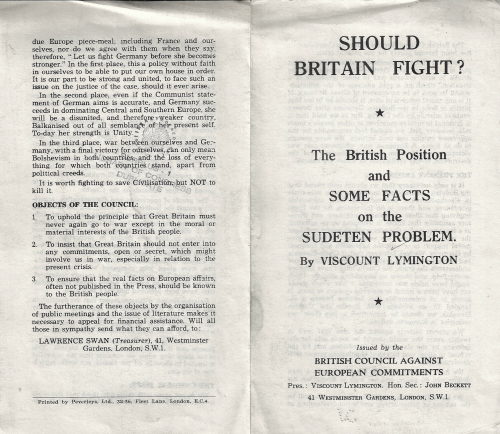
Continue reading ""Should Britain Fight?" An argument for Appeasement, 1938" »
Posted by John F. Ptak in Bad Ideas, Militaria | Permalink | Comments (0)
A History of Blank, Missing, and Empty Things, Part 48: Numbers Numbering Nothing
JF Ptak Science Books Quick Post
It has been some months since the last post in the Blank/Missing Things category, and today I happily add the following, a nominalistically numerated note of nothing:
There is an "underneath" for this "overneath", as this is simply a glassine key for a relatively complicated photo showing a group of meteorological instruments1. Taken out of context, though, the overlay without the reference image takes on quite a different and appealingly Dada-like complexion, an artful canvas of enumerated blankness...that, or a rendering of unregulated numbers in the wild, a capture of herding physical numbers. Do numbers exist? Are there points in space, and lines, and planes, floating out there just beyond our knowledge like Arthur C. Clarke-like monoliths or Abbott's Flatland objects? Well, no. But it is enjoyable to find these printed forms that, if we look at them in a certain way and allow for a bit of fancy, take on a life of their own. (What a funny thing it would be if numbers had names other than their number-- for example, "3" is the form only but its name is a taste or smell, or "Borges", or the bubble 44,332 in the head of a pint of Guinness, or a particular wavelength...that could spice things up.)
NOTES:
1. Dorno, C. Ausstattung moderner Strahlungsobservatorien, Braunschweig, Vieweg u. Sohn, 1926. 10x7”, 13pp+ an interesting illustrated section, “Bilder aus dem Physikalisch_Meteorlogischen Obervatorium, Davos”, which has 9 photo illustrations of the instruments, 6 of which have numbered glassine overlays to help with the identifying legend for the plate.
Posted by John F. Ptak in Blank and Empty Things; A History of | Permalink | Comments (0)
East St. Louis Massacre and the Silent Parade, July 1917
JF Ptak Science Books Post 2752
The Crisis, a journal of the NAACP, called for attention and action in response to the terrible 2 July East St. Louis Riot and massacre in their issue of September 1917. The leadership published a long article detailing the background and the horrors of the event, which you can read if you follow the link. The back of the cover of the journal featured a plea for membership (actually calling for people to "enlist", much like the people doing so during WWI which the U.S. finally entered 6 April 1917 after nearly three years of European warfare) which was followed in a few pages by the details of the event.
Long story short, racial tensions in East St. Louis were increased due to northerly African American migration from the Southern states, causing anxiety among the whites on purely racial reasons as well as the belief that there would be stiffer competition for work. The main catalyst though seems to have been a strike at American Steel, the management hiring hundreds of Black workers to replace the White strikers. Tensions high, a carload of Whites drove into the segregated Black side of town and opened fire on a group of Black men. Shortly afterwards another car of Whites--this time including two policemen--made a similar tour of the area, the Blacks responding with gunfire thinking that it was another drive-by. The two policemen were killed, and then things escalated quickly and brutally, with tens of thousands of Whites turning out to ESL and rioting, beating, clubbing, shooting, and setting fire to buildings (while cutting the hoses of the fire department to ensure that the arson burned the buildings to the ground. Impartial eyewitnesses to the event reported that the National Guard and the police were in very large part unresponsive to the threatened population, and in many cases aided and abetted the rioting. In the end estimates ranged stating that 50-200 African Americans were killed and 6,000 made homeless, while later on a Congressional investigation reported that an accurate estimate of the murdered could not be made.
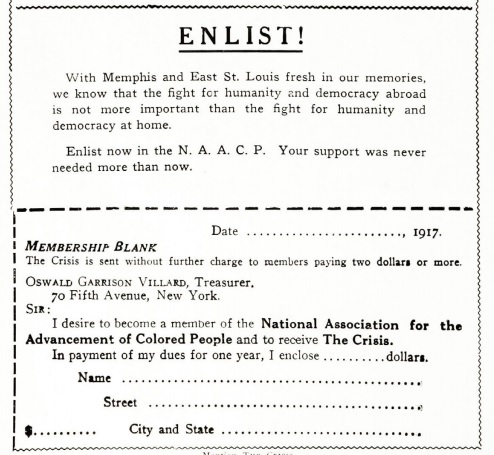
- Source: The Crisis, September 1917, vol 14/5, pp 218-238, via Marxists.org: https://www.marxists.org/history/usa/workers/civil-rights/crisis/0900-crisis-v14n05-w083.pdf
Continue reading "East St. Louis Massacre and the Silent Parade, July 1917" »
Posted by John F. Ptak in Social History | Permalink | Comments (0)
"We are, then, gas engines." Turing and Some of his Childhood Reading.
JF Ptak Science Books Quick Post
The enduring intellectual legacy of Alan Turing's childhood reading in the delightful (and deeply insightful) book Natural wonders every child should know (1912, 1939), by Edwin Tenney Brewster (1866-1960) can clearly be seen throughout the book, given its absorbing and penetrating curiosity. It is a very disarming book, and I think could be easily under-read, even though it has some semi-lofty writing given its audience, but if you give it a chance, there is a LOT going on in it. The possible influence of the book, for example, in relation to Turing's relationship with thinking machines, can be seen in chapter 35, “The Living Automobile”, on pp 238-240, something that must have given the young Turing some considerable stuff to think about:
“If you will think back over what you have already learned in this book, you will see that we began by finding out something about how we men, the animals, and the plants come to have any such things as bodies at all.... We found about something of what animals cannot do, and what they can do, and how they do...We learned how animals of various sorts, and plants as well, see and feel and act; and we learned also something about how we ourselves do our thinking, which is so very different, and so very-much better done, than that of any animal or plant.
“Now we turn to a different matter. We have taken up being, and doing, and thinking. Now we shall consider living. We shall learn about how the body of the plant or animal feeds itself and keeps alive, and how the different parts of it, the bones and skin and leaves and bark, manage to get on with one another, and work together like a well-made machine.”
“For, of course, the body is a machine. It is a vastly complex machine, many, many times more
complicated than any machine ever made by hands; but still after all a machine. It has been likened to a steam engine. But that was before we knew as much about the way it works as we know now. It really is a gas engine; like the engine of an automobile, a motorboat, or an airplane.”
"We are, then, gas engines.”
Full text of the 1939 edition is found here: https://babel.hathitrust.org/cgi/pt?id=coo.31924001126055;view=2up;seq=8
Posted by John F. Ptak in Computer Tech/History | Permalink | Comments (0)
Transatlantic Floating Airports, 1936
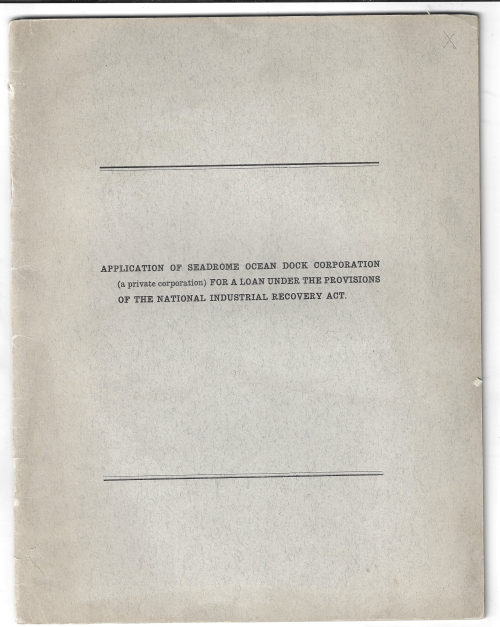 This interesting and exploratory pamphlet, Application of Seadrome Ocean Dock Corporation (a private corporation) for a Loan Under the Provisions of the National Industrial Recovery (1933) was the result of the work of Edward R. Armstrong (1880-1955), and proposed a series of floating airports to facilitate transatlantic flights.
This interesting and exploratory pamphlet, Application of Seadrome Ocean Dock Corporation (a private corporation) for a Loan Under the Provisions of the National Industrial Recovery (1933) was the result of the work of Edward R. Armstrong (1880-1955), and proposed a series of floating airports to facilitate transatlantic flights.
The outline for this plan asks the federal government for a loan of $30 million (Depression) dollars to undertake the construction of a five floating airports transoceanic network. "It will require the work of approximately 10,000 men per month for a period of twenty-four to thirty months". The labor figures did not include was what necessary to produce all of the material necessary for the project ( for reasons unknown). Once finished the network would enable aircraft to make it across the ocean in 18 to 36 hours.
The members of the Seadrome Corporation estimated that the entire 30 million would be paid back by 1945, and that the corporation would be completely debt-free. Perhaps all of this made sense when Armstrong first developed the plan in 1913, just ten years after the Wright brothers' successful first in North Carolina. The idea of the floating airport girding the Atlantic was a pretty interesting idea, seeing as how the world record for sustained non-stop flight in 1913 was 11 hours (in a Maurice Farman MF-2), and that was under more-or-less optimal conditions; the speed record was 120mph, and again, optimal conditions and not sustained for hours on end. By 1933 it seems to me that it had become obvious that non-stop transoceanic flight was coming, and coming soon. That would of course make an investment in the Seadrome project superfluous, like building an antique, though an unnecessary one. The first transatlantic non-stop flight was made by John Alcock and Arthur W. Brown in 1919, averaging about 100mph; Lindbergh would come later to accomplish the first solo non-stop in 1927--by the early 1950's jet aircraft would be making the trip with regularity, which means that for most of the life of the completed Seadrome it would have been unnecessary. I feel certain that the Seadrome--which was supposed to be paid off by 1945, though in 1933 there was no inkling on the part of the Corporation members who wrote the request for the money that a war was looming and that there would have been almost no way for them to have been made at any time between 1939 and 1945--would never have been paid for.Armstrong’s idea would get major play in the popular press from time-to-time, and discussed as a series of floating islands. Armstrong himself would organize the Seadrome Ocean Dock Corp. in the late 1930’s, his pretty but impractical idea (reported by Time Magazine1 in 1933 as little more than “a perennial gift to Sunday feature editors”) finally grinding to a salty end with greater fuel capacity and efficiency in transatlantic aircraft.
As I said, this idea seemed pretty good when it was shiny and new, but less so as time went on and aircraft became larger, more powerful, and more efficient, capable of making the trip on their own. 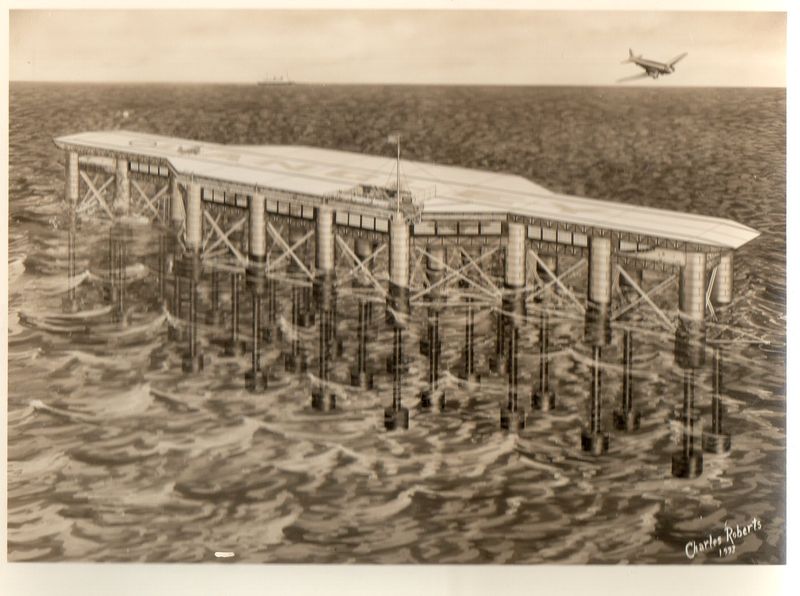
Posted by John F. Ptak in Aviation & flight, Technology, History of | Permalink | Comments (0)
The Truck-Train of Short Future of 1935
JF Ptak Science Books Quick Post
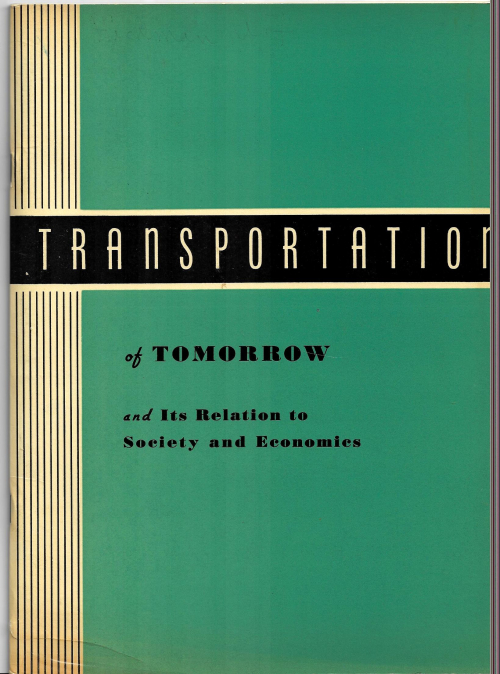 Here's an interesting and pretty vision of the near-future of transportation--the truck-train. It was presented in the pamphlet Transportation of Tomorrow and its Relation to Society and Economics from 1935 (with drawings by J.F. Hickman) and presents us with smaller-version trains short-profile locomotives that hauled truck trailers where the "rail cars" could be immediately dispatched to a waiting truck at a rail head. On the one hand it seems to make a certain amount of sense if you figure the amount of time that rails throughout the country are employed, and that you could have a lot more rail traffic moving along them. On the other hand, you'd have a lot more traffic on the rails, which could lead to a of scheduling problems and delays. Also, once you got to the railhead, how exactly would trucks access the trailers in a way that was sensical and timely? Anyway the convertible highway railroad train looks as though it would cause more problems than it would solve by re-inventing the U.S. railroad system on a smaller scale.
Here's an interesting and pretty vision of the near-future of transportation--the truck-train. It was presented in the pamphlet Transportation of Tomorrow and its Relation to Society and Economics from 1935 (with drawings by J.F. Hickman) and presents us with smaller-version trains short-profile locomotives that hauled truck trailers where the "rail cars" could be immediately dispatched to a waiting truck at a rail head. On the one hand it seems to make a certain amount of sense if you figure the amount of time that rails throughout the country are employed, and that you could have a lot more rail traffic moving along them. On the other hand, you'd have a lot more traffic on the rails, which could lead to a of scheduling problems and delays. Also, once you got to the railhead, how exactly would trucks access the trailers in a way that was sensical and timely? Anyway the convertible highway railroad train looks as though it would cause more problems than it would solve by re-inventing the U.S. railroad system on a smaller scale.
Posted by John F. Ptak in Future, History of the, Technology, History of | Permalink | Comments (0)
The Art of Arithmetic--Numbers on a Stick Calculator, 1936
JF Ptak Science Books Quick Post
Here's your chance to download a DIY cardboard reckoner. I think it would be much more satisfying to do the arithmetic by hand, or use your phone-device, or just call up The Internet and ask it to divide some number y by some number x, but that's not the point. Making it would certainly be a pleasure of some sort because the Napier-like sticks/bones are such a lovely assemblage. And of course all hats off to the person who created the thing to begin with--and I assume that person to be the author of the little pamphlet in which the calco-sticks are found. Edward J. Nungesser published Rapid 'Rithmetic/Calco Sticks (Arithmeic Made Simple and Quick for Those who are in a Hurry and for Those who Usually Evade Anything that Involves Numbers). It was published by Drawden Publications of 7 W 44th St NYC in 1936, and is a pocket-sized 5" tall and 32pp thin. In any event, I really like this little guy, and I think Mr. Nungesser did a fine job. (I tried to find references to him but came up empty; for an instant I thought his name but be a pseudonym ("No Guesser") but I'm pretty certain that this is not the case. Also there is no sign of it at all on WorldCat/OCLC.)
And the instructions:
And the wonderful cover:
Posted by John F. Ptak in mathematics, logic | Permalink | Comments (0)
Outside Looking Out--Space, 1899.
JF Ptak Science Books Post 2751
Back in 1899 the astronomer Adolphe Duponchel1 published a pamphlet on his very involved theories of the motion of the stars and star clusters and the shape of the universe. I couldn't understand much of it, and when I thought about it more, I understood less, and probably less than that. I just couldn't decide what the idea was that he was trying to decipher and share, except to say that it was big.
I wouldn't have thought about this pamphlet at all it if was not illustrated, because the illustrations in this short pamphlet are quite, well, inspired:
Duponchel was an accomplished and published civil engineer, canal and bridge builder, and hydrologist, who later in life veered into cosmogony, publishing on the effects of meteors and solar activities on the distribution of stars, the structure of the galaxy, and the motions of the planets. He met with no success from what I can determine, though he seems to have been very active in his starry pursuits through the 1890's, which was a prime period for French cosmogony. At the very least his ideas look entertaining, and as I said the imaging is quite lovely.
The truth of the matter is that I do not understand what he is talking about, though sometimes it seems as though he is talking about black holes and the motion of stars, except that he seems to be talking about "apex charbonnier" that are dark regions of space that could not be penetrated given the optics of the day. In general though he writes about what effects the "circulation" of the stars and star clusters. Liberally translating he states that "no astronomical problem could offer more interest, and in the absence of a solution of a rigorously demonstrated accuracy can be I am happy to have arrived at finding a plausible and at least probable explanation of the simultaneity of all these coordinated movements in the same state of general equilibrium.
After this very pro forma and enormous statement, we arrive at the unknown stuff of his insight:
"...points noirs isolate correspondent a des rayons visuels qui auraient traverse les mailles des deux reseaux sans rencontrer aucune etoile sur leur passage. Dans une seule direction, sur un espace sans doute assez restreint, mais parfaitement defini par son contour piriforme, cette illumination fait reellement defaut." ("Isolated black/dark spots correspond to visual rays that would have passed through the meshes of the two networks without encountering any stars in their path. In one direction, on a space which is doubtless rather small, but perfectly defined by its "piriforme" outline, this illumination is really lacking." The translation doesn't help the original too much, which left me understanding nothing.
Then, a few pages later, he writes:
“...étudier ici tapissant en quelque sorte les parois du vide de l axe s y trouveraient distribuées en anneaux ou pour mieux dire en tores successifs dont chacun correspondrait à une strate particulière en forme discoi dale d étoiles extérieures. Ces to res successifs (figs 1+2) correspondant aux sphères magnétiques qui accompagnent les noyaux solides du Soleil et des planètes comprendraient chacun un certain nombre d étoiles circulant autour de l axe du tore avec un mouvement de rotation ac célérée en spirale comme celui des sphères magnétiques mais avec des vitesses alternativement de sens direct et de sens inverse de manière à assurer des vitesses concordantes de même direction aux points de tangence de deux tores consécutifs...” Or, “Firstly, to study here somehow lining the walls of the void of the axis would be distributed in rings or, to put it better, in successive tori, each of which corresponds to a particular stratum in the form of a disc of external stars. These successive rests (fig 1+2) corresponding to the magnetic spheres that accompany the solid nuclei of the Sun and planets would each include a number of stars circulating around the axis of the torus with a spiral arc rotational movement like that of the magnetic spheres but with alternately direct and reverse direction so as to ensure concordant speeds of the same direction at the points of tangency of two consecutive tori...” Again, a not-good translation, but I really didn't have much of an idea of what he was writing about.
The pictures are pretty.
If I'm missing something big, please let me know.
Notes:
- Adolphe Duponchel, "Circulation de notre groupe stellaire autour de l'axe charbonnier et mouvement parallactique de l'apex Solaire". Printed by the author, in Paris, 1899, from its appearance in Societe Astronomique de France, 1 March 1899. 9x6", 18pp. WorldCat/OCLC reports 1 copy in the U.S. And either 1 or 3 copies at the Observatoire de Paris—otherwise there are no other copies of this work located. Provenance: Smithsonian Institution, and then the Library of Congress (small mostly-faded oval stamp for the SI on front cover, and the LC surplus stamp on the back cover).
“Et les individus qui participent à cet engouement pour la quête des origines cosmiques n’épargnent ni leurs efforts ni leur temps pour développer, étayer, rendre publique, et faire reconnaître leurs théories. Ainsi, l’ingénieur des Ponts et Chaussées Adolphe Duponchel (1821-1903), après avoir déposé un pli cacheté à l’Académie des sciences le 27 mars 1893 contenant le sommaire d’une brochure exposant ses « Principes de cosmogonie générale », fait imprimer celle-ci à ses frais et l’envoie à l’assemblée savante. Il n’obtient aucune réponse mais persévère et soumet six Notes ou Mémoires à l’Académie sur ce sujet entre 1893 et 1894. Ne parvenant pas à obtenir le soutien académique qu’il recherche, Duponchel va finalement publier sa théorie dans des revues populaires de science, d’abord dans la revue Cosmos le 2 septembre 1893 puis, sous une forme augmentée, dans la Revue Scientifique les 28 juillet et 4 août 1894.”Volny Fages, “Dire l’origine scientifique des astres. L’engouement pour la cosmogonie en France dans la seconde moitié du XIXe siècle”https://www.cairn.info/revue-romantisme-2014-4-page-32.htm
See:
ASTRONOMES FRANÇAIS 1850 - 1950 D'ABBADIE, Antoine. www.obs-hp.fr/dictionnaire/astronomes_A-Z.pdf
See: Agnes Mary Clerke , A Popular History of Astronomy During the Nineteenth Century, p 202, a review of some of the later 19th c solar astronomers.
Posted by John F. Ptak in Astronomy, History of Dots, History of Holes | Permalink | Comments (0)
A Beautiful Diagram of Cyclone Activity (1922)
JF Ptak Science Books Post 2750
This lovely and significant piece of sci-art appeared in Jacob Bjerknes and H. Solberg's "Life Cycle of Cyclones and the Polar Front Theory of Atmospheric Circulation"1 in 1922. This was an expansion of an earlier paper of 19192, and provided the basis for the motion of the atmosphere in terms of warm and cold fronts. “Although rapid transitions or discontinuities in temperature, pressure, and wind velocity had been noted in Jacob’s first model—and even by nineteenth century meteorologists—and although such discontinuities had been theoretically postulated, the 1919 Bergen cyclone model represented the introduction of discontinuities into meteorology as the major focus for practice and, eventually, theory. These “fronts,” as they later were termed, were endowed with scientific reality through the introduction of major changes in forecasting practice. The cyclone model based on fronts entailed the ability to specify in time and three-dimensional space important weather phenomena associated with cyclones to a much greater degree than earlier models could achieve. During the next few years the Bergen group of Vilhelm and Jacob Bjerknes, Ernst Calwagen, Halvor Solberg, and Tor Bergeron, among others, expanded this preliminary cyclone model and accompanying forecasting methods to a comprehensive system for explaining midlatitude weather changes. The polar front, the occlusion process, an evolving cyclone model, and air mass analysis were the conceptual foundation for a new era in meteorology.”3
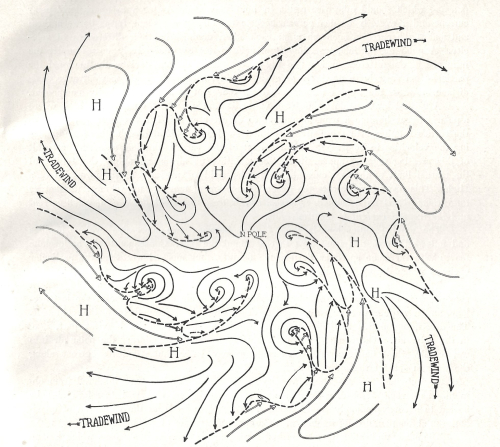
The two authors “...pictured the polar front as a string of families of cyclones, described by dashed lines linking successive warm and cold front”.--Mark Monmonier, Air Apparent: How Meteorologists Learned to Map, Predict, and Dramatize Weather, pg 64, with several reproductions of some of the lovely diagrams.
Notes:
- J. Bjerknes and H. Solberg, Life Cycle of Cyclones and the Polar Front Theory of Atmospheric Circulation. Offprint/separate, Geofysiske Publikationer 3, no. 1, 1922. 12x9, 18pp (paginated 1-18). Bound in cloth, with a half-title and title, though no publication data save for a running abbreviation of the journal name and volume above the text. Nicely bound in buckram. Provenance: U.S. Navy, Naval War College. “Polar front theory is attributed to Jacob Bjerknes, derived from a coastal network of observation sites in Norway during World War I. ... The convergence line ahead of the low became known as either the steering line or the warm front. The trailing convergence zone was referred to as the squall line or cold front.”--Wiki
- This was evidently a longer and more thorough version of a paper submitted by Bjernkes and Solberg to the Monthly Weather Review in 1919 on the findings of the Bergen group. --Robert Marc Friedman, Appropriating the Weather: Vilhelm Bjerknes and the Construction of a Modern Meteorology, p. 180; also noting that this article is “frequently cited”.
- Complete Dictionary of Scientific Biography.
- Wikipedia entry for Bjerknes.
“Bjerknes was part of a group of meteorologists led by his father, Vilhelm Bjerknes, at the University of Leipzig. (“Bjerknes's father, Vilhelm. has often been called the father of modern meteorology. This title is doubly appropriate, for not only did Vilhelm’s vision and research programs lead to establishing new directions, methods, and the conceptual foundation for the science, but Vilhelm’s son also played a fundamental role in creating this new era in atmospheric science.”) Together they developed the model that explains the generation, intensification and ultimate decay (the life cycle) of mid-latitude cyclones, introducing the idea of fronts, that is, sharply defined boundaries between air masses. This concept is known as the Norwegian cyclone model.”--Wikipedia
“The "Bergen School of Meteorology" is a school of thought which is the basis for much of modern weather forecasting. Founded by the meteorologist Prof. Vilhelm Bjerknes and his younger colleagues in 1917, the Bergen School attempts to define the motion of the atmosphere by means of the mathematics of interactions between hydro- and thermodynamics, some of which had originally been discovered or explained by Bjerknes himself, thus making mathematical predictions regarding the weather possible by systematic data analysis. Much of the work was done at the Geophysical Institute, University of Bergen, in Bergen, Norway.”--Wikipedia It should be noted that Jacob was the chief forecaster and head at Bergen 1918-1931.--Complete Dictionary of Scientific Biography
Posted by John F. Ptak in Physics | Permalink | Comments (0)
Radio HATE, Stuttgart, 1939/1940
JF Ptak Science Books Quick Post
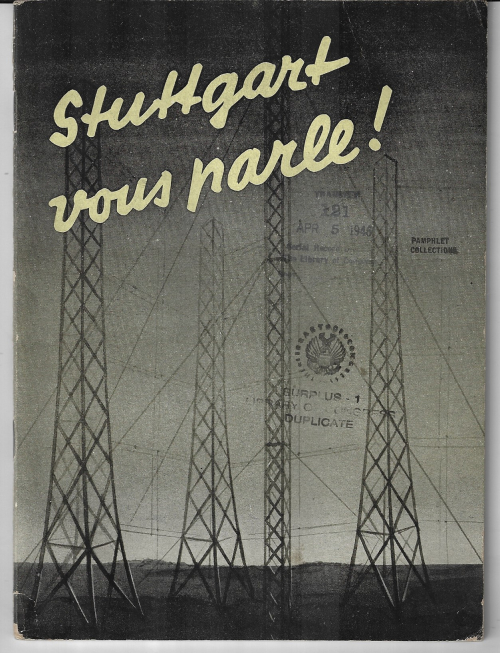 The pamphlet Stuttgart vous parle! (ca. 1941) is nearly the same name as the Stuttgart radio station/program which was a propaganda arm of the Nazis, broadcasting into France in 1939 and 1940, and progressively less so after the French capitulation. Goebbels was very thorough in controlling the radio and television programming/writing/distribution in Germany, as well as creating propaganda broadcasts into Nazi-occupied countries. There is very little question about where this pamphlet is heading, its pro-German, appeasement, anti-Ally, anti-USSR, pro-Vichy sentiments being very clear. For an example, here's a bit from page 30, which recommends the immutability of Mein Kampf:
The pamphlet Stuttgart vous parle! (ca. 1941) is nearly the same name as the Stuttgart radio station/program which was a propaganda arm of the Nazis, broadcasting into France in 1939 and 1940, and progressively less so after the French capitulation. Goebbels was very thorough in controlling the radio and television programming/writing/distribution in Germany, as well as creating propaganda broadcasts into Nazi-occupied countries. There is very little question about where this pamphlet is heading, its pro-German, appeasement, anti-Ally, anti-USSR, pro-Vichy sentiments being very clear. For an example, here's a bit from page 30, which recommends the immutability of Mein Kampf:
“Si en quelques jours, devant l'evidence des menaces et des pieges que l'Angleterre lui tendait, le Reich s'est reconcilie avec Moscou, il faut admettre qu'il n'existe pas d'idees preconcues dans la mentalite du Fuhrer et qu'il dirige la politique allemande au mieux des eventualites. Que ces quelques explications vous fassent saisir ce qu'il y a d'immuable dans mein kampf et ce qu'il s'y trouve de momentane, c'esttout ce que nons esperions aujourd'hui.”
Experts state that the principal broadcaster for the radio show was Paul Ferdonnet. Captured at the end of the war in Germany, Ferdonnet was tried as a war criminal, a charge he denied, saying that it was not he who was the broadcaster and so on. The court found otherwise, and Ferdonnet ("le traître de Stuttgart") was convicted and executed in short order, not living to the end of the summer of 1945.
[There is also a publication Stuttgart vous Parle! Les Discours de Paul Ferdonnet Diffuses vers la France a partir de la Radio Allemande en 1939-1940 (edited by VHO), which seems to state in certain terms that Ferdonnet was indeed guilty of war crimes for his participation in pro-Nazi propaganda. It is also interesting to note that Stuttgart vous parle! has no identifying marks for publisher, printer, or place of publication. Nothing.]
On the one hand, free speech is a big deal; but free speech does not extend to shouting "Fire!" in a crowded theater. (I'm slipping up on the name right now, but there was a case back in the 'teens of 100+ people, mostly women and children, family of union members, who were meeting in a hall when an anti-union thug yelled "fire!", starting a deadly stampede.) Working away at the psyche of a people trying to defend itself, trying to survive, is very nasty and murderous stuff. Ferdonnet was executed for this action, a fate escaped by E. Pound for his Fascist broadcasts in Italy during WWII...but all of that is another story.
Posted by John F. Ptak in Militaria | Permalink | Comments (0)
Creating National Monuments Made of the Ashes of the Dead (1917)
JF Ptak Science Books Quick Post
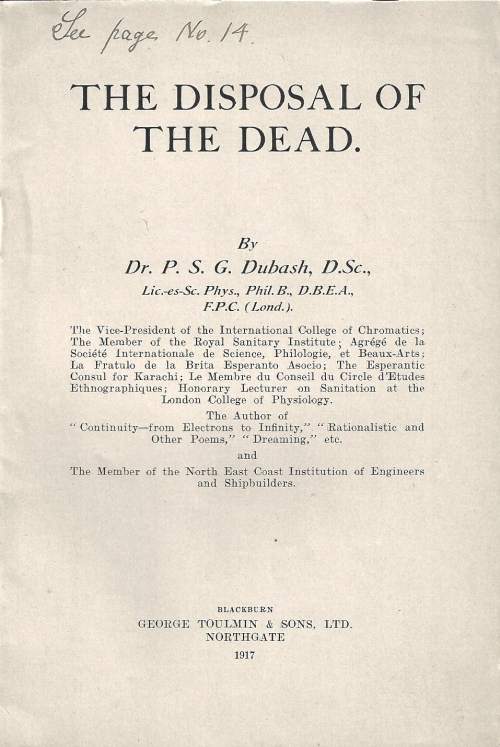 In the death-drenched year of 1917, in the third year of the then Great War, P.S.G. Dubash offered to readers here and there the idea of transforming the ashes of the dead into something "useful", using them as the material for creating statues of the "Great Departed". "The world today is so much the poorer for not having the ashes of such great men as Isaac Newton, Lord Kelvin, Martin Luther..." and so, we can create statues of them using the ashes of others. This would be particularly so for people contributing their ashes to the statue of someone whom they admired. In that way, as Dubash points out, the remains of soldiers would live a more sustained post-death state by being part of a statue of, say, Lord Kitchener. "Towns can be thus adorned with the living memories of the great dead."
In the death-drenched year of 1917, in the third year of the then Great War, P.S.G. Dubash offered to readers here and there the idea of transforming the ashes of the dead into something "useful", using them as the material for creating statues of the "Great Departed". "The world today is so much the poorer for not having the ashes of such great men as Isaac Newton, Lord Kelvin, Martin Luther..." and so, we can create statues of them using the ashes of others. This would be particularly so for people contributing their ashes to the statue of someone whom they admired. In that way, as Dubash points out, the remains of soldiers would live a more sustained post-death state by being part of a statue of, say, Lord Kitchener. "Towns can be thus adorned with the living memories of the great dead."
Part of this 18-page pamphlet (published by George Toulmin & Sons of Northgate) describes the four ways of disposal of the dead: internment, embalming, burning in the open, and the towers of silence (where bodies are brought to a height and displayed to be eaten by birds). Dubash makes the case of great waste in three of the four, only finding use in the "exposure" category.
And so, there you have it. There's a certain something here that makes sense, using thousands and tens of thousands of remains to create statuary. Gravestones and memorials aren't made of ashes, but they are reminders of what sleeps underneath, and in a way they are a type of mostly-repetitive statuary sans biological remains.
There is an interesting part here at the end of the pamphlet, where Dubash makes the case that "there should be no colour prejudice, because after death there is no colour prejudice, because in the eyes of God the colour prejudice is a sin". This is a provoking comment, and makes me think of the history of the skin color in Heaven...a history that I do not know.
Posted by John F. Ptak in Medicine, History of, Social History | Permalink | Comments (0)
Interesting Dust-Covered Numbers--Apartments in NYC in 1933
JF Ptak Science Books Post 2749
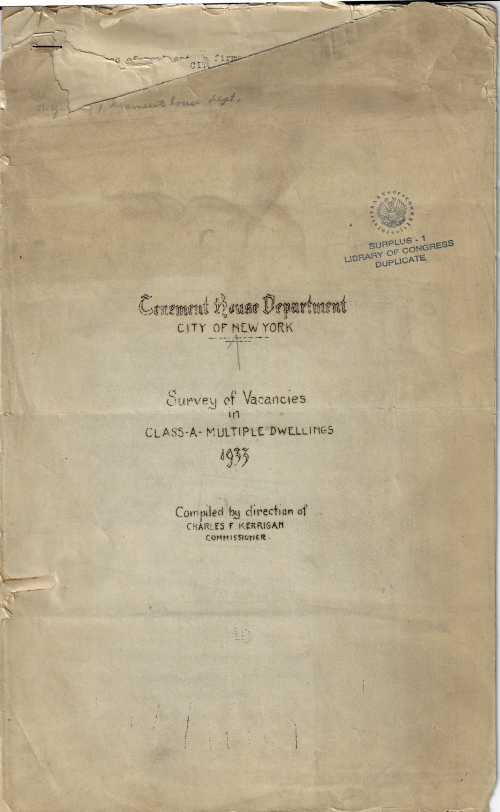 I know that there must be someone out there in Webtubiana desperately looking for this in a way in which they didn't know they (a) needed it at all and (b) didn't know that that unknown need was desperate. And so here it is: New York City apartment vacancies in 1933. There is a tale being told here, in NYC, in the fourth year or so of the Depression and the first year of FDR, about what could be afforded and how much that all was. The list is found in eight pages of Tenement House Department, City of New York: Survey of Vacancies in Class-A-Multiple Dwellings, compiled by the Commissioner Charles F. Kerrigan, and dated in the text "May 11, 1933". It is a mimeographed production with a done-at-the-office quality to it, the typewriter having a problem with "9" and "0" and "O" as they tended to be filled in with ink.
I know that there must be someone out there in Webtubiana desperately looking for this in a way in which they didn't know they (a) needed it at all and (b) didn't know that that unknown need was desperate. And so here it is: New York City apartment vacancies in 1933. There is a tale being told here, in NYC, in the fourth year or so of the Depression and the first year of FDR, about what could be afforded and how much that all was. The list is found in eight pages of Tenement House Department, City of New York: Survey of Vacancies in Class-A-Multiple Dwellings, compiled by the Commissioner Charles F. Kerrigan, and dated in the text "May 11, 1933". It is a mimeographed production with a done-at-the-office quality to it, the typewriter having a problem with "9" and "0" and "O" as they tended to be filled in with ink.
I know this sounds as brittle as ice on an ego, but once you get past the dust, there is definitely a story being told, if you looked for it.
At the very least this document will tell you what the rent was like on apartments from 1-7 rooms (elevator and non-elevator buildings), which means that if you consult the ever-useful Bureau of Labor Statistics inflation calculator you can at least establish a common denominator for value interpretation into current dollars. There are 33 (!) price classifications for monthly rental, ranging from $5 (or less) to "over $300". So, using the BLS formula $1 in 1933 is worth about $19.21 in 2018 (or for the sake of convenience let's say 1:20). So the cheapest monthly rent in 1933 for a vacant 1-room apartment in 1933 was $100...except there weren't any available. The next step up was $6-10, and using the upper end at $300/month there were only 13 1-rooms vacant. The most-available of these price ranges was 189 1-rooms in the $31-$35 range, or about $700 vacant. There was nothing vacant over $75/month in a total of 1071 vacancies.
The most commonly-vacant category was in the $26-$40/mo (or $800/month) 3 room apartments, where there were 8,488 apartments available in the 33,563 vacancies.
It turns out that of the 839,245 "total apartments" in NYC there were 194,963 vacancies for a rate of 12.4%. Nowadays the vacancy rate for Manhattan hit a high of 2.6% in 2017 and the average studio apartment rented for about $3k (or $156 in 1933 dollars, which would have put you in the upper tier apartment dwellers back then).
Different times.
There's more, and if anyone needs it they can let me know and I'll provide what I can. Right now I'm dead-up against my THX-1138 time limit of 30-minutes/post, so this one ends now.
Posted by John F. Ptak in Social History | Permalink | Comments (0)
Recent Posts
- On Getting "E=mc^2" Wrong, Twice in 1.5 Square Inches
- Colossus in the Colosseum
- Birds and Human Flight
- Cross-Section of an Arctic-Exploring Balloon, 1890
- The Goubet Submarine, 1886
- A Monumental and Fantastically Bad Idea: Lowering the Mediterranean (1929)
- Two Uncommon Crowd Scenes, 1932 and 1945.
- Mathematical Exercises and Found Art
- Bridges Never Built: the Hudson River Bridge (Midtown) 1896
- An Episode in Antiquarian Depiction of Upside Down Things (1506)
Categories
- Absurdist, Unintentional (726)
- Alphabets (68)
- American History: Western Exploration & Native Americans (60)
- Anticipation, History of (407)
- Architecture and Building (239)
- Art (54)
- Art History (342)
- Astronomy (162)
- Atlas of Dead Ideas (36)
- Atomic and Nuclear weapons (181)
- Aviation & flight (296)
- Bad Ideas (504)
- Beautiful books (31)
- Biology (12)
- Blank and Empty Things; A History of (362)
- Books--Great Cover Art (57)
- Books--title pages, beautiful (35)
- Books: Great & Lost in the Dust (25)
- Books: Title Pages, Unusual (31)
- Boredom, History of (11)
- Brevity and Complexity (51)
- Calculating (59)
- Chemistry, history of (16)
- Children's Art (23)
- Circles, Geometry (6)
- Color & its advanced Abuses (31)
- Color Theory (33)
- Computer Tech/History (130)
- Contraries (11)
- Cross-Sections (51)
- Daily Dose from Dr. Odd (84)
- Economics (8)
- Electro-LUXurious (21)
- Exploration (3)
- Fantastic Beasts and Tales (9)
- Fantastic Titles (45)
- Fear, History of (21)
- Future Punk (27)
- Future, History of the (312)
- German Design (14)
- Histories of Smallness (30)
- History (2)
- History of Dots (72)
- History of Goodbye (61)
- History of Holes (68)
- History of Lines (83)
- History of Memory (32)
- History of Nothing (47)
- History of the Future (346)
- How Fast Stuff Is. (3)
- Iconography (80)
- Imaginary and Impossible, Museum of the (14)
- Impossible Books (35)
- Industrial & Technological art (171)
- Information, Quantitative Display of (618)
- Inventions (66)
- Lines, History of (36)
- Literature (2)
- Magnifcent Mundane (14)
- Manuscripts (6)
- Maps, Cartography, History of Mapmaking (250)
- Maps/Diagrams of Imagination & Ideas (174)
- mathematics, logic (111)
- Medicine, History of (180)
- Memory, Historry of (12)
- Militaria (476)
- Mistakes, The Importance of (7)
- Music (12)
- Mythology (14)
- Naming Things (147)
- Outsider Logic (98)
- Patents (59)
- Perception (187)
- Perspective (199)
- Photography (144)
- Photography, history (69)
- Physics (115)
- Picture Post/Image Dump (5)
- Piles, History of (1)
- Politics, American (3)
- Poster Series (5)
- Prints--looking HARD/deeply at (279)
- Propaganda (55)
- Psychology (20)
- Questionable Quidity (26)
- Reference Tools (39)
- Science (7)
- Social History (292)
- Sports (5)
- Statistics--Fossil, Found, Odd, Forgotten (29)
- Strange Things in the Sky (41)
- Tech-Quiz (15)
- Technology, History of (838)
- Title Page Art, Beautiful (32)
- Travel (3)
- What is It? (14)
- Women, History of (98)
- WORD art (15)
- World War I (247)
- World War II (56)
- Writing Systems (8)
- You Are There (6)
- Zoomology (25)

